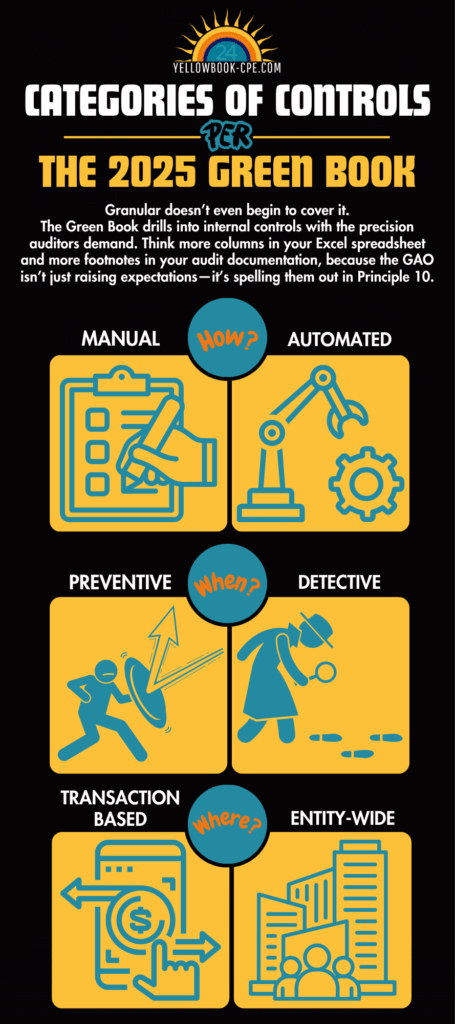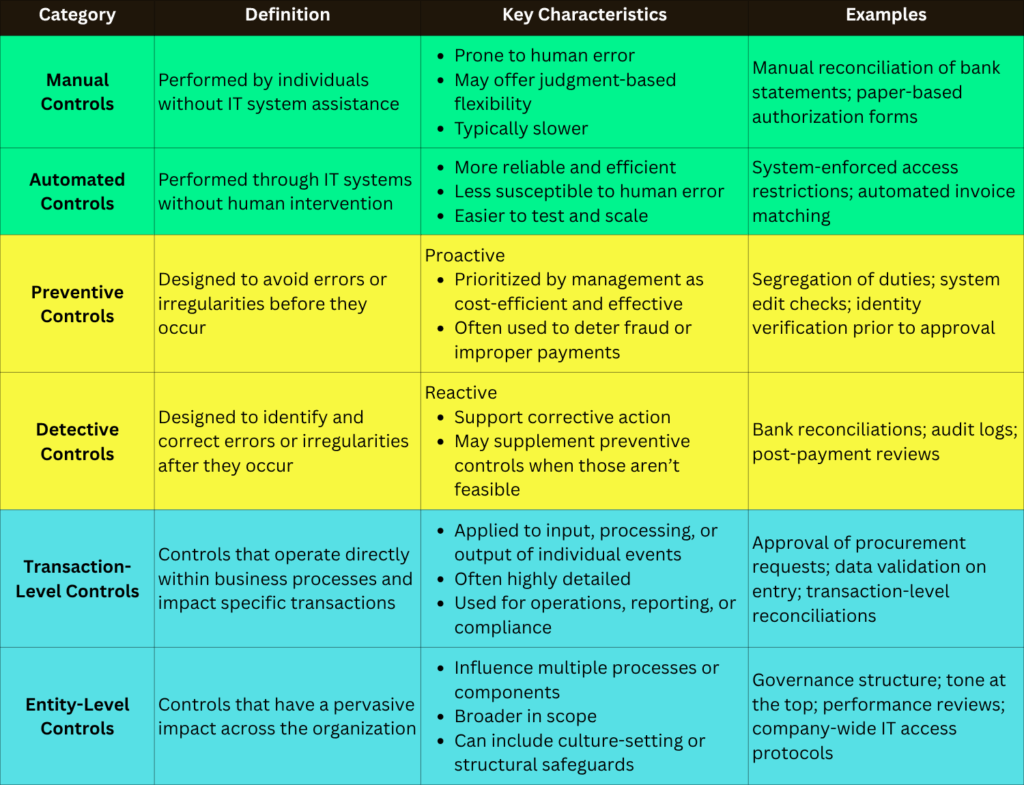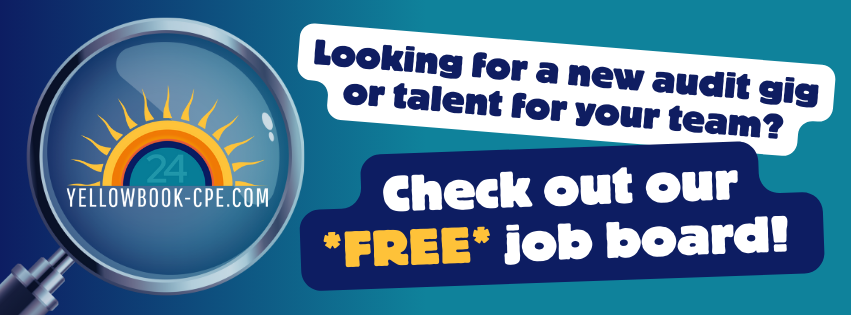
If you’re a government auditor, program manager, internal control enthusiast (we exist!), or someone just trying to decode the language of accountability, you’ve probably encountered a slew of control terms – manual vs. automated, preventive vs. detective, transaction-level vs. entity-level – and thought, “Can someone just explain this in plain language?”
You’re not alone.
Controls are the unsung heroes of good governance. They quietly power the systems keeping agencies honest, programs running, and financial statements trustworthy. But they come in different flavors. Some stop problems before they start and some catch them after they’ve occurred. Others span from tiny transactional details to big-picture, strategic oversight.
Unfortunately, discussions about internal controls can quickly devolve into alphabet soup. That’s where YellowBook-CPE.com comes in! We’ve created a simple visual breaking down three of the most essential control categories using plain language and practical examples.
Whether you’re new to the Green Book or have been auditing your heart out since the GAO first put colored covers on their standards, this table can help clarify what’s what.
So let’s control ourselves and take a look.

So what to do with all this?
If you’re a program manager implementing internal controls, you’ll want to:
- Prioritize preventive controls. They’re cheaper than fixing messes.
- Leverage automated controls where appropriate. They’re faster and more reliable. Just don’t forget human oversight!
- Balance detective controls as a safety net. They help identify what slipped through the cracks.
- Pay attention to both the forest and the trees. Entity-level controls set the tone and culture. Transaction-level controls catch the data-level details.
Auditors must include these terms in your documentation and use the concept to evaluate the strength of your auditee’s controls.
As GAO’s 2025 Green Book reminds us, internal control is not just about compliance. It’s about being a good steward of public resources, achieving mission objectives, and earning the public’s trust.
In short? Good controls don’t just prevent fraud, they build confidence. And with a little clarity (and maybe a colorful infographic), even the most complex internal control discussions become easier to navigate.
Looking for high-quality and convenient CPE?
We have you covered! Our live webinars are a great choice if you want the learning to come to you. Just log on at the scheduled time and enjoy wherever you are! Here are a few of our upcoming courses:
- June 10: Introduction to Forensic Accounting (2 CPE hours)
- June 17: Fraud in Plain Sight: Why Auditors Lose the Fight (4 CPE hours)
- June 18: Data to the Rescue: Using Visuals for Better Audit Reports (2 CPE hours)
- June 26: Global Risk Assessment (3 CPE hours)
- July 15: GAGAS 2024: The New Quality Management System (2 CPE hours)
Need to do things at your own speed, but still get all your credits? Plan your CPE around your life, not the other way around! Yellowbook-CPE.com has dozens of self-study courses, including the Creating a Productive Auditor & Auditee Relationship Bundle. Learn ways to smooth the auditor and auditee relationship so the auditee welcomes the auditor back year after year after year…




 Yellowbook-CPE.com is registered with the National Association of State Boards of Accountancy (NASBA) as a sponsor of continuing professional education on the National Registry of CPE Sponsors. State boards of accountancy have final authority on the acceptance of individual courses for CPE credit. Complaints regarding registered sponsors may be submitted to the National Registry of CPE Sponsors through its website:
Yellowbook-CPE.com is registered with the National Association of State Boards of Accountancy (NASBA) as a sponsor of continuing professional education on the National Registry of CPE Sponsors. State boards of accountancy have final authority on the acceptance of individual courses for CPE credit. Complaints regarding registered sponsors may be submitted to the National Registry of CPE Sponsors through its website: